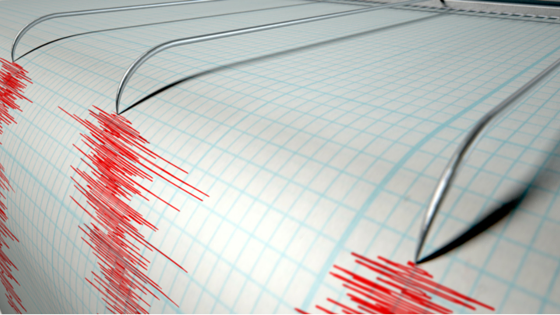In November 2015, the United States Resiliency Council (USRC) launched the USRC Earthquake Building Rating System, a first-of-its-kind performance rating system for seismic hazards. This system is the first reliable, consistent method to determine how susceptible buildings may be to earthquakes, providing facility owners, insurance providers, and engineers with a better understanding of how to prevent losses. The rating system assesses buildings on three important criteria, each of which is detailed later in this article.
The USRC’s rating system allows food processors who own or plan to own properties in states susceptible to earthquakes, such as California, Nevada and Washington, to obtain reliable, consistent information about a building’s expected performance during an earthquake. As a result, they can mitigate losses and downtime due to earthquakes, which is crucial in the food processing industry.
What is the USRC?
The USRC was established in 2011 because of the rising concern about communities’ resilience to natural disasters. A joint Applied Technology Council (ATC) and Federal Emergency Management Agency (FEMA) stakeholder’s workshop began to develop the rating system. Two major issues the workshop wanted to address were:
- The need for a system implemented by a non-profit private sector entity
- The need to maintain the system’s long-term integrity
As a result, the USRC was formed, and in collaboration with the Structural Engineers Association of Northern California (SEAONC), it created the underlying criteria of the performance rating. The basis for these ratings was determined using decades of research and data collection on factors like:
- Ground shaking intensity expected to occur an average of once every 475 years
- Frequency of seismic activity in the area
- The distance from the epicenter of the earthquake to the building
Most seismic building codes are enforced by local governments or other entities, and vary from state to state. The USRC’s rating system allows owners to construct or modify their buildings to meet a specified level of safety rather than accept varying minimal precautions prescribed by building codes.
3 performance measures
The USRC Earthquake Building Rating System assesses three separate performance measures on a five-star scale. (Note: this is not a required compliance program; building owners may adhere to it on a voluntary basis.)
- Safety—The safety rating concerns personnel inside the building and the potential life loss that could result from an earthquake. It is an indicator of how easily people can get out of the building and avoid severe personal injury or death during and after a seismic incident. Primary dangers to workers due to earthquakes include:
- Being struck by structural components and inadequately secured stored materials
- Burns resulting from building fires due to gas leaks or electrical shorts
- Exposure to chemicals released from stored or process chemicals
- A five-star rating in this performance measure indicates that injuries to personnel are unlikely. A one-star rating indicates that loss of life is likely in the building.
- Damage—The damage rating illustrates the estimated cost to repair the building after an event as a percentage of the building’s overall replacement cost. It includes the cost of damage to the building’s:
- Structural components
- Mechanical components
- Electrical components
- Plumbing components
- Note: It does not include damage caused by breaks in the water and gas pipes.
- A five-star rating in this performance measure indicates that the building will suffer minimal damage, likely less than 5 percent of the building replacement cost. A one-star rating indicates that the building will suffer severe damage, likely more than 40 percent of the building’s replacement cost.
- Recovery—The recovery rating considers the estimated time until the building may be used for basic functions after an earthquake. It reflects the minimum time needed to complete necessary repairs and remove hazards and damages to the building before the building can be declared fit for occupancy.
- A five-star rating in this performance measure indicates that the building will be fit for use immediately or within a few days from the incident. A one-star rating indicates that the building may not be operational for over a year.
Voluntary rating system
While food processors should continue to take the necessary steps to prepare for an earthquake, using the Earthquake Building Rating System can give you a clearer idea of how severely an earthquake could damage your facility.
Ratings are performed by USRC certified engineers, who provide an objective evaluation of the building’s expected performance. The following building aspects are considered in the Earthquake Rating:
- Building structure
- Mechanical, electrical and plumbing systems
- Cladding
- Windows
- Partitions
- Ceilings
Food processors can choose two types of ratings given by USRC based on business needs:
-
- Transaction rating—This is used as a reliable transactional due diligence report that meets the demands of the finance markets for commercial real estate. It is useful for making decisions regarding property investment and risk exposure, but is not permitted to be used in marketing materials. A transaction rating is valid up to five years.
- Verified rating—This includes a technical review of the building’s evaluation and can be used for promotional, marketing and publicity purposes. Owners must renew their verified rating every five years.
The USRC plans on expanding its resilience rating systems in the near future to include other natural hazards such as hurricanes, floods and tornadoes.



